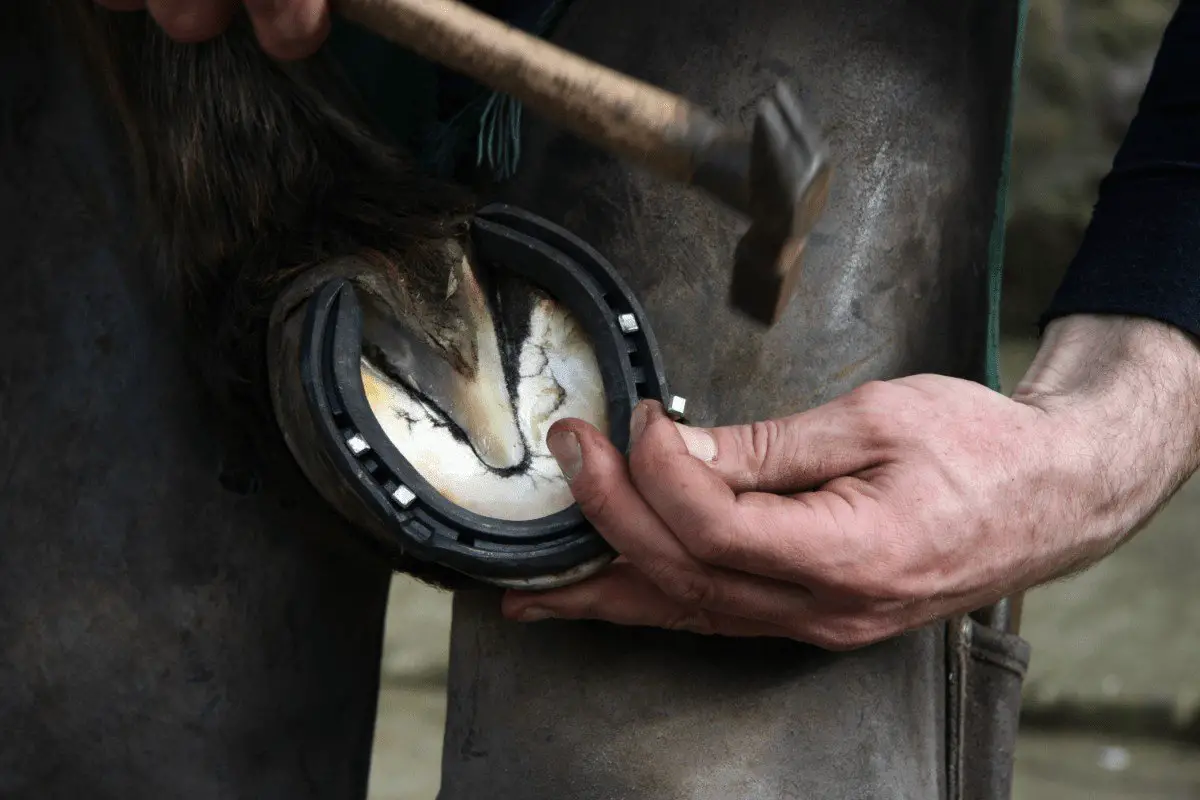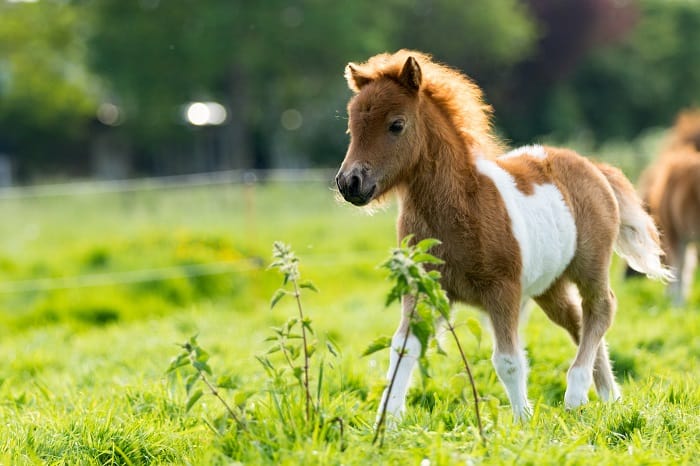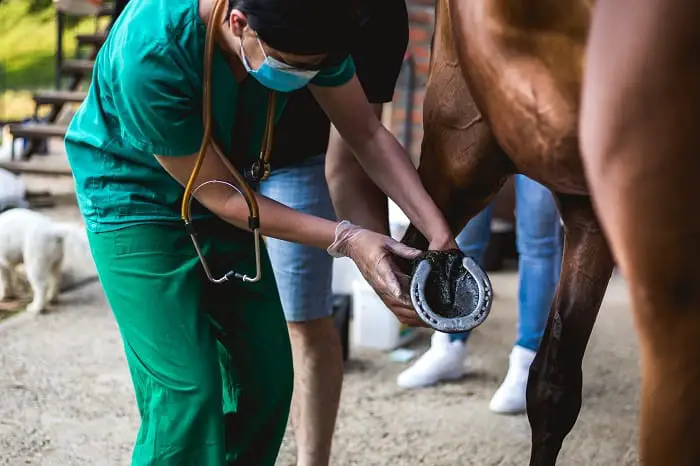Last Updated on April 7, 2020
Hoof care is vital to the overall health of a horse. Certain hoof conditions can be very serious and need lots of medical attention. One of the most gruesome looking things that can happen in hoof care is a degloved horse hoof/horse hoof without a cap.
A degloved horse hoof is where the entire outer part of the horse’s hoof detaches, leaving the hoof without a cap. It rarely happens; however, it is not a sight for the faint of heart. Though a horse may survive a degloved hoof, it is a very serious injury.
Degloved Horse Hoof, Parts of a Hoof
The hoof capsule or cap contains the hoof wall, sole, frog, and bulbs of the heel. It is a significant part of a horse’s hoof. Increased pressure on the hoof can cause problems with the hoof cap.
The hoof cap is used to protect many sensitive parts such as the coronary band, sensitive laminae, and insensitive laminae. All parts of the hoof work together to support the horse and absorb shock. When there is a problem with part of the hoof, it can affect the entire hoof and cause serious lameness problems.
A horse’s hoof generally grows at the rate of three-eights an inch per month. It is important to keep your horse on a regular schedule with the farrier to maintain healthy hooves. Good nutrition is also important to hoof health and there are supplements available to help maintain healthy hooves.
What Can Cause a Degloved Hoof
Though it rarely happens, a degloved horse hoof can happen for a variety of different reasons. It is important to make sure your horse has healthy hooves in order to prevent any hoof issues. A degloved hoof is one of the most serious injuries that can happen to a horse.
Veterinarians often study degloved horse hooves to get a better understanding of how the hoof works and all the parts to it. This medical tutorial shows what a removed hoof capsule looks like and the different parts of the hoof. This video is not for the faint of heart, so watch with caution if you are sensitive to blood and seeing medical procedures.
Laminitis
Laminitis, which one may also hear referred to as founder, is a serious hoof condition. It happens when the blood flow to the sensitive and insensitive laminae is disrupted. The laminae structures within the hoof secure to the coffin bone to the hoof wall.
Signs of laminitis include heat in the hoof, sensitivity, reluctance to perform certain gaits and lameness. If you suspect your horse may have laminitis, contact your vet immediately. If not treated, laminitis can cause a horse hoof to become degloved in rare circumstances.
Degloved Horse Hoof: Horseshoes
It is common for many horses to wear horseshoes. However, it is important to make sure that your horse is getting shod on a regular basis to avoid loose shoes and to make sure the shoe is properly fitted to the hoof. Even when maintaining proper hoof care, shoes can come loose and accidents can happen.
In rare cases, a horse may get their shoe caught in something and end up pulling off their hoof cap. This can happen when a horse gets their shoe caught in a heavy-duty fence, cattle guard or metal hay feeder.
Foals
It is more common for foals to lose their hoof caps than mature horses. They may come off by simply being stepped on by an adult horse.
Degloved Horse Hoof: What to Watch Out For
Though it may not lead to a degloved hoof, there are several ailments you should be aware of that could potentially contribute to the loss of a hoof cap. A cracked hoof, an improperly fitted or loose horseshoe, laminitis, white line, stress, hard work and faults in confirmation can contribute to a horse losing a hoof cap.
A poorly fitted shoe or a loose shoe can cause several problems for a horse. It can cause lameness, injury, change in gait and cause the hoof to crack. However, a properly trimmed and shoed hoof can significantly help a horse with hoof problems.
How It Can Be Treated
If your horse loses its hoof cap, you need to contact your vet immediately, as it is an emergency. Until your vet can there, cover the hoof with a towel or bandage. Your vet might recommend anti-inflammatory pain medicine be given to your horse until they can get there.
Your vet will provide the appropriate treatment for your horse, which will likely include time at a vet clinic and x-rays. If the horse is able to regrow their hoof capsule, it will likely take at least a year.
Horses that grow back a hoof cap likely will have chronic lameness issues, though some horses are able to return to being sound. There will likely be an abnormality in the new hoof capsule. Foals often have a better chance of making a full recovery than adult horses.
Though horses can make a full recovery, unfortunately not all horses are lucky. If not treated right away, a removed hoof capsule can prove to be fatal. Even with immediate veterinarian treatment, a horse might not be able to survive the trauma of losing the hoof capsule.
Understanding a Hoof
The hoof is a complex part of the horse. It is made up of several different parts and is important to the entire dynamic of the horse. Though rare, a horse hoof cap that has been degloved can be a serious issue.
The hoof cap helps protect several sensitive parts of the hoof. It is important to make sure your horse is receiving proper hoof care, as it is important for their all-around health. A horse should get their feet trimmed every six to eight weeks and any signs of problems in the hoof should be reported to your vet.
Please comment if you have any questions on this article or have any remarks regarding this post!
Michael Dehaan is a passionate horse owner, horse rider, and lover of all things equine. He has been around horses since he was a child, and has grown to become an expert in the field. He has owned and ridden a variety of horses of different breeds, and has trained many to compete in shows and competitions. He is an experienced horseman, having worked with and competed many horses, including his own. He is an active member of the equestrian community, participating in events and teaching riding lessons.



